Stuxnet Raises 'Blowback' Risk In Cyberwar
スタックスネットがサイバー戦争でブーメランリスクとなる
サイバー攻撃で敵の社会インフラを麻痺させたり、大災害を引き起こさせる。コンピューター制御システムの発展は、一方で脆弱性の窓を大きく開きながらリスクを社会に背負わせていく。なにも原子力だけに限らないリスクの拡大と拡散・・
by Tom Gjelten
November 2, 2011

Mark Fabro, industrial control systems cyber emergency response instructor, leads an exercise at the Department of Homeland Security's cyberdefense facility at the Idaho National Laboratory in Idaho Falls, Idaho, Sept. 29. Training at the lab is intended to help protect the nation's power, water and chemical plants, electrical grid and other facilities from computer viruses such as Stuxnet.
産業コントロールシステム緊急対応インストラクター、マーク・ファブロ氏が、9月29日、アイダホ州のアイダホ・フォールにあるアイダホ国立研究所の米国国土安全保障省サイバー防御施設でサイバー防御演習を指導している。 同研究所での演習は国営の電力施設、水利、化学工場、伝送網その他の施設をスタックスネットのようなコンピュータウィルスから防御することを助けることを目的としている。
The Stuxnet computer worm, arguably the first and only cyber superweapon ever deployed, continues to rattle security experts around the world, one year after its existence was made public.
スタックスネット・コンピュータワームは、間違いなく、これまでの中で、最初でかつ唯一のサイバー・スーパーウェパンであり、その存在が公表されて以来一年間、世界中のサイバーセキュリティの専門家を驚かせている。
Apparently meant to damage centrifuges at a uranium enrichment facility in Iran, Stuxnet now illustrates the potential complexities and dangers of cyberwar.
明らかにイランのウラン増殖炉の遠心分離器にダメージを与えることを狙っており、スタックスネットはサイバー戦争の複雑さと危うさを物語っている。
Secretly launched in 2009 and uncovered in 2010, it was designed to destroy its target much as a bomb would. Based on the cyberworm's sophistication, the expert consensus is that some government created it.
2009年に秘密裏に攻撃を仕掛け、2010年に発見された、それはターゲットを爆撃で破壊するかのように破壊するように設計されていた。 そのサイバーワームの精巧さゆえ、専門家の一致した見方は、そのワームはどこかの政府レベルが作ったに違いないということだ。
"Nothing like this had occurred before," says Joseph Weiss, an expert on the industrial control systems widely used in power plants, refineries and nuclear facilities like the one in Iran. "Stuxnet was the first case where there was a nation-state activity to physically destroy infrastructure [via a cyberattack]."
「このようなことはこれまで一度も起きたことがない。」と言うのは、広く使われている発電所、精製所、やイランの増殖炉のような核施設に広く使われている産業制御システムの専門家のジョセフ・ワイス氏である。
Reactions to the use of Stuxnet in Iran generally fall into two categories. For those focused on the danger of Iran developing a nuclear weapon, Stuxnet was something to celebrate, because it set back Iran's nuclear program, perhaps by years.
イラクでのスタックスネットの使用に関しての反応は一般的に二つのカテゴリーに分けられる。 イランが核兵器を開発する危険性に着目する人たちにとっては、スタックスネットは、イランの核開発プログラムを恐らく数年遅らせたため、歓迎する対象であった。
But for people who worry about the security of critical U.S. facilities, Stuxnet represented a nightmare: a dangerous computer worm that in some modified form could be used to attack an electric or telecommunications grid, an oil refinery or a water treatment facility in the United States.
しかし、米国の重要な施設の保全を危惧する向きには、スタックスネットは悪夢意外の何物でもない。即ち、スタックスネットの変形バージョンが米国の電子、遠隔通信網、石油精製施設、或いは水処理施設などを攻撃するのに使用されるかも知れないのだ。
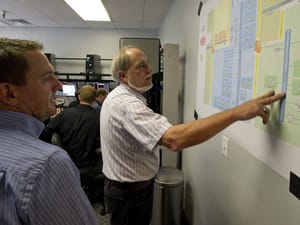
Cybersecurity analysts look at a diagram that shows their computer network, which is coming under attack, during a mock exercise at the Idaho National Laboratory, Sept. 30, in Idaho Falls, Idaho. アイダホ州のアイダホ・フォールのアイダホ国立研究所で9月30日に行われた模擬演習で、サイバーセキュリティのアナリスト達が攻撃を受けているコンピュータネットワークのダイアグラムを見ている。
"It's just a matter of time," says Michael Assante, formerly the chief security officer for the North American Electric Reliability Corporation. "Stuxnet taught the world what's possible, and honestly it's a blueprint."
「もう時間の問題です。 スタックスネットは世界に何が可能で、そしてそれが設計されていることを教えています。」と、ミヒャエル・アサンテ(前ノースアメリカン・エレクトリック・リライアビリティ・コーポレーションの主任保全幹部)は話す。
Further complicating the Stuxnet story is the widely held suspicion that the U.S. government, possibly in partnership with Israel, had a hand in the creation of this lethal cyberweapon, notwithstanding the likelihood that in some form it could now pose a threat to the U.S. homeland.
スタックスネットの話をより複雑にしているのは、この致命的サイバー兵器の製造にアメリカ政府が恐らくイスラエルと組んで関与しているのではないかという疑惑が広まっていることだ。 同様なワームが米国本土をも脅威にさらすかもしれない公算があるにも関わらずである。
Training To Face A Cybercatastrophe サイバー混乱対処訓練
The prospect of a cyberattack on U.S. infrastructure assets has prompted the Department of Homeland Security (DHS) to arrange a new training program for the people who are supposed to protect the electric grid, manufacturing plants, refineries, water treatment centers and other critical facilities.
米国のインフラ施設へのサイバー攻撃の危険見積りは米国国土安全保障省(DHS)で、電子通信網、製造工場、石油精製施設、水処理センターその他の緊要な施設を防護することが期待される要員の新しい訓練プログラムを準備するために急がれている。
The top concern is the industrial control systems (ICS) that oversee the operation of key equipment at those facilities, from the valves to the breaker switches.
最大の懸念は、これらの施設のバルブやブレーカー・スイッチなどの重要な装備の監視をする産業制御システムである。
What Is Stuxnet? スタックスネットとは何?
"Stuxnet" is a computer worm designed to attack large-scale industrial facilities like power plants, dams, refineries or water treatment centers. It targets the computer systems used to monitor and control specific operations in those facilities and most famously was used to destroy centrifuges in a uranium enrichment facility in Natanz, Iran.
スタックスネットは電力施設、ダム、製油所、水処理センターなどの大規模産業施設の攻撃をするよう設計されたコンピュータワームである。 それは、それらの施設の特定機能の監視・制御に使われているコンピュータシステムを狙っている。最も有名な例はイランのナタンズのウラン増殖施設の遠心分離器を破壊するのに使われた。
In that case, the Stuxnet worm rewrote the code in a component that controlled the rotor speeds of the centrifuges. The code alteration resulted in slight variations in the rotor speeds, subtle enough not to cause attention but significant enough to cause physical damage to the centrifuges. The name "Stuxnet" comes from a combination of key filenames hidden in the code.
このケースではスタックスネットワームは遠心分離器の回転速度をコントロールする部品のコードを書きかえた。 このコード書替は回転速度に微妙な変化を与えるが気付かれるほどではないが、遠心分離器にとっては物理的破壊に繋がり十分に効果を上げる。このスタックスネットという名前の由来は、このコードに隠れている鍵となるファイルネームからとっている。
Several features of the Stuxnet worm distinguished it as highly advanced. No previous computer virus had been used to physically sabotage industrial machinery. It is also unique in its ability to remain undetected for a long period of time, largely by sending fake messages that suggest processes are running normally. It has the ability to search for particular components, leaving others undisturbed. At least two U.S. computer systems in the United States were found to be "infected" by Stuxnet, but they were not "affected," according to Department of Homeland Security officials, because they did not match the Stuxnet requirements.
スタックスネットの幾つかの特徴は際立って進んでいる。 産業機械を物理的に停止させるためにコンピュータウィルスが使用された例は今までには無い。 それはまた、処理が通常通りに処理されているということを示唆する、偽のメッセージを送り込むことで、およそ長期間にわたり発見されないというユニークな特徴を持っている。それは特定の部品を探す能力を持ち、他の部品には影響及ぼさない。 少なくとも米国のコンピューターシステムがスタックスネットに感染していることが解っている。しかしそれらのシステムは感染しているが、影響を受けていないと、米国国土安全保障省の関係者は話す。なぜなら、それらはスタックスネットの要求に合致していないからだという。
The sophistication and complexity of the Stuxnet worm has led researchers to believe that only a well-resourced nation-state could have developed it.
そのスタックスネット・ワームの精緻さと複雑さから、研究者は十分な資力のある国家レベルが関与して開発しているに違いないと信じている。
By hacking into the computer networks behind the industrial control systems, an adversary could re-program an ICS so that it commands the equipment to operate at unsafe speeds or the valves to open when they should remain closed. This is roughly the way Stuxnet was able to damage the centrifuges in Iran.
産業制御システム(ICS)の裏のコンピュータネットワークにハッキングすることで、敵はICSを再プログラムすることができ、装置に指令を送って不安全な速度で運行させたり、バルブを閉めるべきときに開いたりさせる。 これがスタックスネットのイランの遠心分離器を破壊することが出来た簡単な説明だ。
Participants in the training program, based at the Idaho National Laboratory (INL) in Idaho Falls, are taken step by step through a simulated cyber intrusion, so they can experience firsthand how a Stuxnet-like attack on their facilities might unfold.
アイダホフォールのアイダホ国立研究所(INL)で、このトレーニングに参加する者は、サイバー侵入のシミュレーションを通して一つずつ習うため、彼らはいかにしてスタックスネットのような攻撃が自分達の施設で展開していくかを直に体験することができる。
During an INL exercise that was staged for visiting reporters in late September, instructor Mark Fabro installs his "red" team on the second floor of the training center, with the mission of penetrating the computer network of an unsuspecting industrial company, set up on the floor below.
9月末に訪問した記者団に展示したINLの演習中に、インストラクターのマーク・ファブロが彼の赤チームを、同トレーニングセンターの2階に展示した、まだ気づいていない産業会社のコンピュータネットワークに侵入する任務を付与して、インストールして見せる。
The trainees on the "blue" team downstairs sit in a mock control room, monitoring their computer screens for any sign of trouble.
階下の訓練を受ける青チームは模擬制御室に座り、トラブルの兆候をコンピュータスクリーンで監視している。
At first, everything appears normal. The attackers have managed to take control of the computer network without the defenders even realizing it. But gradually, problems develop in the control room.
最初は、全てが正常通りに見えている。 攻撃チームは、防御側に気付かれずにコンピュータネットワークの制御を操作した。 そして、緩やかではあるが、問題は制御室全体に広がっていった。
"It's running really slow," says one operator. "My network is down."
「本当にゆっくりやられた。 私のネットワークはダウンした。」とあるオペレータは言った。
Sitting at their monitors upstairs, the attacking team is preparing to direct the computer system to issue commands to the industrial equipment.
階上のモニターに座って、攻撃チームは産業装置の指令を出す、コンピュータシステムに出す命令を準備している。
"Take this one out," says Fabro, pointing to a configuration that identifies the power supply to the control room. "Trip it. It should be dark very soon."
「これを取り除きましょう。」とファブロ氏は制御室の電力供給部を指して言う。「妨害します。すぐに暗くなるはずです。」
Within 30 seconds, the mock control room downstairs is dark. 30秒も経たないうちに、階下の模擬制御室は真っ暗になった。"This is not good," says Jeff Hahn, a cybersecurity trainer who this day is playing the role of the chief executive officer of the industrial company under attack. The blue team is under his direction. 「これはまずい」と、今日、攻撃に曝されている産業会社のCEOの役を演じているトレイなーのジェフ・ハーンは言った。 青チームは支配下に置かれている。
"Our screens are black and the lights are out. We're flying blind," Hahn says.「我々のスクリーンは消え、明かりが消えた。我々は盲目飛行をしている」とハーンは言う。
During the exercise, the critical industrial facility under attack is a pumping station, such as might be found in a chemical plant or water treatment center. As the operators sit helpless at their terminals, the pumps suddenly start running, commanded by some unseen hand. Before long, water is gushing into a catch basin.
演習中、攻撃下の重要産業施設はポンプ場である、それらは化学工場や水処理センタ―などで見かけるものだ。 ポンプ場のオペレーター役の人達は、ターミナルで途方に暮れている。見えない手で指令を受けポンプが突然動き出したのだ。ほどなく、水が排水槽に噴き出してきた。
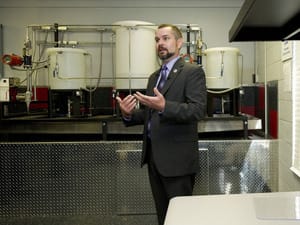
Marty Edwards, director of the DHS Industrial Control Systems Cyber Emergency Response Team says the U.S. government's cybersecurity lab had no role in the development of Stuxnet. マーティ・エドワード(米国安全保障省産業制御システムサイバー緊急即応チームの長)は米国政府のサイバーセキュリティ研究所はスタックスネットの開発に全く関与していないと言う。
"There's nothing we can do," one of the operators tells the CEO. "We can only sit here and watch it happen."
「我々は何もできません。」とオペレータの一人がCEOに向って言う。「我々は起きていることを傍観するだけです。」
If this mock facility were an actual chemical plant, hazardous liquids could be spilling. If it were an electric utility, the turbines could be spinning out of control.
「もし、この模擬施設が実際の化学工場だったら、危険な液体があふれ出たかもしれません。 もしそれが電力施設であれば、タービンが制御不能になるかも知れません。」
If it were a refinery, the tanks could be bursting or pipelines could be blowing up, all because the cyberattackers have been able to take over the computer network that controls the key operations.
もし、それが精油所であれば、タンクが爆発し、パイプラインが吹っ飛んでいるかも知れません、全てはサイバー攻撃側が重要な操作の制御をするコンピュータネットワークを乗っ取ることが出来たからです。
The cyberattack scenario is all the more worrisome, because it is not clear that such attacks can be effectively stopped.
サイバー攻撃のシナリオが、とりわけ面倒なのは、そのような攻撃が効果的に阻止できるかどうかハッキリしないからです。
"Some of these [systems] can't be protected," says Weiss, the ICS security expert. "We're going to have to figure out how to recover from events that we simply can't protect these systems from."
「これらのシステムの幾つかは防護できません。 我々は守れないそれらのシステムを、発現から如何にして復旧させるかを考えなければならないのです。」とICSセキュリティの専門家であるワイスは話す。
A U.S. Role In Stuxnet? スタックスネットにおける米国の役割
The challenge of managing a Stuxnet-like attack is compounded by the possibility that the U.S. government itself had a role in creating the cyberweapon.
スタックスネットのような攻撃を管理する難しさは、米国政府自身がサイバー兵器を創り出しているのに一役買っているのではないかという可能性が話を拗れさせているからだ。
U.S. officials were certainly aware of the ICS vulnerabilities that the Stuxnet worm ultimately exploited. An INL experiment in 2007, dubbed "Project Aurora," first demonstrated how cybercommands alone could destroy industrial equipment. INL researchers, who at the time included Michael Assante, rewrote the ICS computer code for the generator, directing the generator to destroy itself.
米国関係者は確かに、スタックスネット・ワームが最終的に付け込む産業制御システム(ICS)の脆弱性について気付いていた。2007年のINLの実験は、プロジェクト・オーロラと命名され、まず如何にしてサイバーコマンドだけで産業装置を破壊できるかを展示してみせた。 その時、ミヒャエル・アサンテのチームのINLの研究者達は、ICSの発電機のコンピュータコードを書きかえて、その発電機自身を破壊する指令を出していた。
"When we started to conduct the test, that really robust machine couldn't take it," Assante recalls. "The coupling broke ... and you saw black smoke belching out of it."
我々がその実験を実施し始めたとき、その本当に頑健なマシンの限界だった。 連結部が破損し・・・・黒煙が立ち上り始めた」とアサンテは回想する。
In 2008, INL researchers performed a demonstration expanding on the Aurora experiment and their further analysis of ICS vulnerabilities. The PowerPoint briefing was prepared specifically for Siemens, the company whose equipment the Stuxnet attack targeted. One year later, the worm was introduced into Siemens ICS equipment used at a uranium enrichment facility in Natanz, Iran.
2008年に、INLの研究者はオーロラ実験を拡張したデモを実施した、そして更にICSの脆弱性についての分析を深化させた。 パワーポイントのブリーフィング資料はとりわけスタックスネットの攻撃目標となっているシーメンス社の装備に焦点を当てて準備された。 一年後、イランのナタンズのウラン増殖施設に使われているシーメンス社製のICS(産業制御システム)にワームが侵入した。
Ralph Langner, a German cybersecurity researcher who was among the first to analyze the Stuxnet code, came away convinced that it was a U.S. creation.
ドイツ人サイバーセキュリティ研究者でスタックスネットコードの分析のための当初のメンバーである、ラルフ・ラングネルは、それを米国の仕業と確信し、メンバーから去って行った。
"To us, it was pretty clear that the development of this particular malware required resources that we only see in the United States," Langner says.「我々にとって、米国でしか見れないリソースを必要とする独特のマルウエア(不正ソフト)の開発であることは極めて明白だった。」とラングネルは言う。
Marty Edwards, director of the DHS Industrial Control Systems Cyber Emergency Response Team, based at the Idaho lab, denies any INL role in the creation of Stuxnet and says the ICS traits the worm exploited were relatively well known by the time it was created.
マーティ・エドワード(アイダホ研究所にある、DHS産業制御システムサイバー緊急対応チームのディレクター)はINLがスタックスネットを作ったという話しを否定して、ワームが攻撃したICSの痕跡はそれまでに既に出回り比較的良く知られていたものだったと話している。
"I think it was only a matter of time before those common weaknesses or vulnerabilities were leveraged in an event such as Stuxnet," Edwards says. He would not comment on any role that other U.S. government agencies might have played in the development of the Stuxnet weapon. 「スタックスネットのような事案にこれらの弱点や脆弱性が付け込まれるのは、もう時間のもんだいです。」とエドワードは言う。 彼は、他の米国政府当局がスタックスネット兵器の開発に何か役割を担っているかどうかについて言及はしなかった。
That the United States has an offensive capability in the cyberwar domain is a matter of official record. Activities in that area are highly classified, but officials privately acknowledge that U.S. agencies have developed cyberweapons for offensive use. 米国はサイバー戦争の分野で攻撃能力を保持していることは公的な記録になっている。 この分野での活動は高度の機密であるが、関係者は私的には米国当局が攻撃使用のためのサイバー兵器を開発していることを認めている。
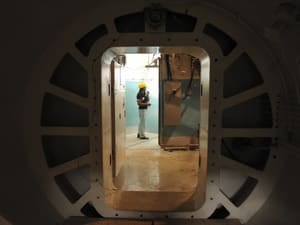
The Stuxnet computer worm reportedly affected several laptops belonging to employees of the Bushehr nuclear power plant (shown here in a file photo from August 2010 and released by the International Iran Photo Agency) outside the southern city of Bushehr, Iran, as well as centrifuges at Natanz, the country's most important uranium enrichment facility.
スタックスネット・コンピュータワームは報告によると、イランの最も重要なウラン増殖施設の遠心分離器だけでなく、ブッシャの原子力発電所の授業員の幾つかのラップトップにも影響を及ぼしていたとのこと。(この写真は2010年8月に国際イラン写真局がリリースしたもの)
It has also been reported that the United States has engaged previously in the sabotage of Iranian nuclear facilities. The use of Stuxnet would fit squarely within such a category. 米国が以前にイランの各施設の破壊に関与したことは既に報道されており、スタックスネットの使用は正に、この範疇に属している。
Joel Brenner, the former inspector general at the National Security Agency, writes in his new book, America the Vulnerable, that the use of Stuxnet "would ... have been consistent with U.S. policy but not with previous U.S. methods, which avoided computer operations likely to damage others besides its intended targets."
ジョエル・ブレナー(国家安全保障局の前監察官)は彼の著書(アメリカ、その脆弱性)の中でこう書いている。 スタックスネットの使用は米国の政策に矛盾はしないが、米国のこれまでのやり方ではない。これまでのやり方は本来のターゲット以外の他に損害をもたらすようなコンピュータ・オペレーションへの攻撃は避けてきた。
Some observers have argued that the risk of a weapon like Stuxnet being turned against U.S. assets was so great that no U.S. government agency could logically have supported its development. But others aren't so sure.
ある観測筋はスタックスネットのような兵器のリスクはアメリカの施設に指向される危険性は非常に高いと心配する。 政府当局で、そのような展開に対して支援をしている部局は無い。 しかしその他については不確かだ。
Among them is Assante, who was among the first cybersecurity experts to warn that Stuxnet could provide a blueprint for attacks on U.S. infrastructure.
その中の一人がアサンテである、彼は最初のサイバーセキュリティの専門家であり、スタックスネットが米国のインフラ攻撃のための設計図を提供する恐れがあると警告している。
Now the president of the National Board of Information Security Examiners, Assante argues that concerns about Iran developing a nuclear weapon could have justified Stuxnet's creation. 情報保全審査国家委員会の会長のアサンテはイランの核兵器開発は米国のスタックスネット開発を正当化すると懸念を表明している。
"That is probably one of the largest national security challenges I can envision," Assante said in a recent meeting with reporters at the Idaho lab. "In that context, you can make a pretty strong argument that the benefit of using a cyberweapon to slow down or delay [a nuclear weapon program] or to achieve a specific objective might absolutely outweigh the risk."
「これは多分、私が想像するに、最も大きな国家的安全保障への試練の一つだ」とアイダホ研究所で記者団との最近の会談でアサンテは発言している。 「この文脈において、我々はサイバー兵器を、核兵器開発プログラムを遅らせるために、或いはリスクに勝る重大な特定目標を達成すために使用する利益について、極めて活発な議論をする必要があるかも知れない。」
Questions Of Information-Sharing 情報シェアの疑問
Given the secrecy around the U.S. offensive cyberwar capability, however, that cost-benefit analysis could only be carried out at the highest levels of the U.S. government. Moreover, it is unclear whether agencies responsible for defending the US infrastructure would even be part of the deliberation.
しかしながら、米国の攻撃的サイバー戦争遂行能力にまつわる秘匿性を前提とすれば、コストと利益の関係の分析が政府の最上層部でなされるだろう。 さらに言えば、米国のインフラを守る責任がある部局が考慮の対象の一部になるか判然としない。
"[The development of a cyberweapon] would probably be so highly classified that the people at DHS wouldn't even know about it," says one former intelligence official.
「サイバー兵器の開発は非常に高度な秘匿性があり、DHSの人々はでさえそれについては知らされないだろう。」と元情報部員は話している。
Such a strict compartmentalization of policymaking would raise the question of whether there is sufficient communication between the offensive and defensive teams in the cyberwar domain. そのような政策決定における縦割り行政はサイバー戦争のカテゴリーの中で攻撃的チームと防御的チームの間ですら十分な意思疎通が図られているか疑問が沸く。
If Stuxnet was developed by U.S. cyberweapon specialists, the DHS personnel who spent a year analyzing the computer code were presumably engaged in a major duplication of effort.
もし、スタックスネットが米国のサイバー兵器スペシャリストによって開発されていたとするならば、DHS(米国本土安全保障省)の職員がコンピュータコード分析に費やした1年は恐らく無駄な努力だったということになる。(ダブった努力)
But Greg Schaffer, assistant secretary of homeland security for cybersecurity and communications, says DHS officials have no complaint over coordination with U.S. agencies responsible for offensive cyber activities. しかし、DHSのサイバーセキュリティおよびコミュニケーション担当の補佐官であるグレッグ・シェファーは、DHSは攻撃的サイバー活動担当の政府当局から調整について注文をつけられたことは無いと言っている。
"DHS is focused on network defense," Schaffer says. "We do get assistance from the organizations that work on the offensive mission. Whether they bring their work [to us] is something they have to decide. That is not something that we worry about."
「DHSはもっぱらネットワーク防御に重点を置いている。我々は攻撃的任務を担当する組織からのサポートも受けており、彼らが、彼らの仕事を我々に持ち込むか否かは彼らに自主裁量権がある。 これが、我々が心配していることだ。」とシェーファーは話す。
A growing awareness of the cyberthreat to critical U.S. infrastructure assets, however, may well deepen concerns about the "blowback" risk to the U.S. homeland from the development of a potent cyberweapon designed to be used elsewhere.
米国の重要なインフラ施設へのサイバー脅威への認識の高まりは、どこか他所へ使用するために設計された強力なサイバー兵器の開発からの米国本土への呼び戻しリスクへの懸念を深めるかもしれない。
The appropriate level of information-sharing between the offensive and defensive teams within the U.S. cybercommunity is likely to be the focus of intense interagency discussion.
米国のサイバーコミュニティの中での攻撃部門と防御部門の相互の情報共有の適切なレベルは、部局間の集中審議の焦点になるだろう。
"My sense is that there are lots of people talking about it," says Herbert Lin, chief scientist at the National Academy of Sciences and a co-editor of a book on policy, law and ethics in cyberwar. "But almost all of the discussion is going on behind closed doors."
「私の感覚ではそれに関して人々は沢山の議論がありますが、それらの多くのものは密室でなされています。」とナショナル科学アカデミーの主任科学者であり、「サイバー戦争における政策、法律そして倫理の本」の共著者でもあるハーバート・リンは語っている。
Eventually, this could change. Whether and when the United States should use nuclear weapons or chemical weapons or land mines has been vigorously debated in public for years, and it may be only a matter of time until the use of cyberweapons gets similar attention.
実際に、これも変わるだろう。 米国が核兵器や化学兵器或いは地雷を使うべきか、何時使うのかと言った議論が何年にもわたって活発に討論されています、そしてサイバー兵器の使用についても同様の議論がなされるのも、そう遠くない将来でしょう。
スタックスネットがサイバー戦争でブーメランリスクとなる
サイバー攻撃で敵の社会インフラを麻痺させたり、大災害を引き起こさせる。コンピューター制御システムの発展は、一方で脆弱性の窓を大きく開きながらリスクを社会に背負わせていく。なにも原子力だけに限らないリスクの拡大と拡散・・
by Tom Gjelten
November 2, 2011

Mark Fabro, industrial control systems cyber emergency response instructor, leads an exercise at the Department of Homeland Security's cyberdefense facility at the Idaho National Laboratory in Idaho Falls, Idaho, Sept. 29. Training at the lab is intended to help protect the nation's power, water and chemical plants, electrical grid and other facilities from computer viruses such as Stuxnet.
産業コントロールシステム緊急対応インストラクター、マーク・ファブロ氏が、9月29日、アイダホ州のアイダホ・フォールにあるアイダホ国立研究所の米国国土安全保障省サイバー防御施設でサイバー防御演習を指導している。 同研究所での演習は国営の電力施設、水利、化学工場、伝送網その他の施設をスタックスネットのようなコンピュータウィルスから防御することを助けることを目的としている。
The Stuxnet computer worm, arguably the first and only cyber superweapon ever deployed, continues to rattle security experts around the world, one year after its existence was made public.
スタックスネット・コンピュータワームは、間違いなく、これまでの中で、最初でかつ唯一のサイバー・スーパーウェパンであり、その存在が公表されて以来一年間、世界中のサイバーセキュリティの専門家を驚かせている。
Apparently meant to damage centrifuges at a uranium enrichment facility in Iran, Stuxnet now illustrates the potential complexities and dangers of cyberwar.
明らかにイランのウラン増殖炉の遠心分離器にダメージを与えることを狙っており、スタックスネットはサイバー戦争の複雑さと危うさを物語っている。
Secretly launched in 2009 and uncovered in 2010, it was designed to destroy its target much as a bomb would. Based on the cyberworm's sophistication, the expert consensus is that some government created it.
2009年に秘密裏に攻撃を仕掛け、2010年に発見された、それはターゲットを爆撃で破壊するかのように破壊するように設計されていた。 そのサイバーワームの精巧さゆえ、専門家の一致した見方は、そのワームはどこかの政府レベルが作ったに違いないということだ。
"Nothing like this had occurred before," says Joseph Weiss, an expert on the industrial control systems widely used in power plants, refineries and nuclear facilities like the one in Iran. "Stuxnet was the first case where there was a nation-state activity to physically destroy infrastructure [via a cyberattack]."
「このようなことはこれまで一度も起きたことがない。」と言うのは、広く使われている発電所、精製所、やイランの増殖炉のような核施設に広く使われている産業制御システムの専門家のジョセフ・ワイス氏である。
Reactions to the use of Stuxnet in Iran generally fall into two categories. For those focused on the danger of Iran developing a nuclear weapon, Stuxnet was something to celebrate, because it set back Iran's nuclear program, perhaps by years.
イラクでのスタックスネットの使用に関しての反応は一般的に二つのカテゴリーに分けられる。 イランが核兵器を開発する危険性に着目する人たちにとっては、スタックスネットは、イランの核開発プログラムを恐らく数年遅らせたため、歓迎する対象であった。
But for people who worry about the security of critical U.S. facilities, Stuxnet represented a nightmare: a dangerous computer worm that in some modified form could be used to attack an electric or telecommunications grid, an oil refinery or a water treatment facility in the United States.
しかし、米国の重要な施設の保全を危惧する向きには、スタックスネットは悪夢意外の何物でもない。即ち、スタックスネットの変形バージョンが米国の電子、遠隔通信網、石油精製施設、或いは水処理施設などを攻撃するのに使用されるかも知れないのだ。

Cybersecurity analysts look at a diagram that shows their computer network, which is coming under attack, during a mock exercise at the Idaho National Laboratory, Sept. 30, in Idaho Falls, Idaho. アイダホ州のアイダホ・フォールのアイダホ国立研究所で9月30日に行われた模擬演習で、サイバーセキュリティのアナリスト達が攻撃を受けているコンピュータネットワークのダイアグラムを見ている。
"It's just a matter of time," says Michael Assante, formerly the chief security officer for the North American Electric Reliability Corporation. "Stuxnet taught the world what's possible, and honestly it's a blueprint."
「もう時間の問題です。 スタックスネットは世界に何が可能で、そしてそれが設計されていることを教えています。」と、ミヒャエル・アサンテ(前ノースアメリカン・エレクトリック・リライアビリティ・コーポレーションの主任保全幹部)は話す。
Further complicating the Stuxnet story is the widely held suspicion that the U.S. government, possibly in partnership with Israel, had a hand in the creation of this lethal cyberweapon, notwithstanding the likelihood that in some form it could now pose a threat to the U.S. homeland.
スタックスネットの話をより複雑にしているのは、この致命的サイバー兵器の製造にアメリカ政府が恐らくイスラエルと組んで関与しているのではないかという疑惑が広まっていることだ。 同様なワームが米国本土をも脅威にさらすかもしれない公算があるにも関わらずである。
Training To Face A Cybercatastrophe サイバー混乱対処訓練
The prospect of a cyberattack on U.S. infrastructure assets has prompted the Department of Homeland Security (DHS) to arrange a new training program for the people who are supposed to protect the electric grid, manufacturing plants, refineries, water treatment centers and other critical facilities.
米国のインフラ施設へのサイバー攻撃の危険見積りは米国国土安全保障省(DHS)で、電子通信網、製造工場、石油精製施設、水処理センターその他の緊要な施設を防護することが期待される要員の新しい訓練プログラムを準備するために急がれている。
The top concern is the industrial control systems (ICS) that oversee the operation of key equipment at those facilities, from the valves to the breaker switches.
最大の懸念は、これらの施設のバルブやブレーカー・スイッチなどの重要な装備の監視をする産業制御システムである。
What Is Stuxnet? スタックスネットとは何?
"Stuxnet" is a computer worm designed to attack large-scale industrial facilities like power plants, dams, refineries or water treatment centers. It targets the computer systems used to monitor and control specific operations in those facilities and most famously was used to destroy centrifuges in a uranium enrichment facility in Natanz, Iran.
スタックスネットは電力施設、ダム、製油所、水処理センターなどの大規模産業施設の攻撃をするよう設計されたコンピュータワームである。 それは、それらの施設の特定機能の監視・制御に使われているコンピュータシステムを狙っている。最も有名な例はイランのナタンズのウラン増殖施設の遠心分離器を破壊するのに使われた。
In that case, the Stuxnet worm rewrote the code in a component that controlled the rotor speeds of the centrifuges. The code alteration resulted in slight variations in the rotor speeds, subtle enough not to cause attention but significant enough to cause physical damage to the centrifuges. The name "Stuxnet" comes from a combination of key filenames hidden in the code.
このケースではスタックスネットワームは遠心分離器の回転速度をコントロールする部品のコードを書きかえた。 このコード書替は回転速度に微妙な変化を与えるが気付かれるほどではないが、遠心分離器にとっては物理的破壊に繋がり十分に効果を上げる。このスタックスネットという名前の由来は、このコードに隠れている鍵となるファイルネームからとっている。
Several features of the Stuxnet worm distinguished it as highly advanced. No previous computer virus had been used to physically sabotage industrial machinery. It is also unique in its ability to remain undetected for a long period of time, largely by sending fake messages that suggest processes are running normally. It has the ability to search for particular components, leaving others undisturbed. At least two U.S. computer systems in the United States were found to be "infected" by Stuxnet, but they were not "affected," according to Department of Homeland Security officials, because they did not match the Stuxnet requirements.
スタックスネットの幾つかの特徴は際立って進んでいる。 産業機械を物理的に停止させるためにコンピュータウィルスが使用された例は今までには無い。 それはまた、処理が通常通りに処理されているということを示唆する、偽のメッセージを送り込むことで、およそ長期間にわたり発見されないというユニークな特徴を持っている。それは特定の部品を探す能力を持ち、他の部品には影響及ぼさない。 少なくとも米国のコンピューターシステムがスタックスネットに感染していることが解っている。しかしそれらのシステムは感染しているが、影響を受けていないと、米国国土安全保障省の関係者は話す。なぜなら、それらはスタックスネットの要求に合致していないからだという。
The sophistication and complexity of the Stuxnet worm has led researchers to believe that only a well-resourced nation-state could have developed it.
そのスタックスネット・ワームの精緻さと複雑さから、研究者は十分な資力のある国家レベルが関与して開発しているに違いないと信じている。
By hacking into the computer networks behind the industrial control systems, an adversary could re-program an ICS so that it commands the equipment to operate at unsafe speeds or the valves to open when they should remain closed. This is roughly the way Stuxnet was able to damage the centrifuges in Iran.
産業制御システム(ICS)の裏のコンピュータネットワークにハッキングすることで、敵はICSを再プログラムすることができ、装置に指令を送って不安全な速度で運行させたり、バルブを閉めるべきときに開いたりさせる。 これがスタックスネットのイランの遠心分離器を破壊することが出来た簡単な説明だ。
Participants in the training program, based at the Idaho National Laboratory (INL) in Idaho Falls, are taken step by step through a simulated cyber intrusion, so they can experience firsthand how a Stuxnet-like attack on their facilities might unfold.
アイダホフォールのアイダホ国立研究所(INL)で、このトレーニングに参加する者は、サイバー侵入のシミュレーションを通して一つずつ習うため、彼らはいかにしてスタックスネットのような攻撃が自分達の施設で展開していくかを直に体験することができる。
During an INL exercise that was staged for visiting reporters in late September, instructor Mark Fabro installs his "red" team on the second floor of the training center, with the mission of penetrating the computer network of an unsuspecting industrial company, set up on the floor below.
9月末に訪問した記者団に展示したINLの演習中に、インストラクターのマーク・ファブロが彼の赤チームを、同トレーニングセンターの2階に展示した、まだ気づいていない産業会社のコンピュータネットワークに侵入する任務を付与して、インストールして見せる。
The trainees on the "blue" team downstairs sit in a mock control room, monitoring their computer screens for any sign of trouble.
階下の訓練を受ける青チームは模擬制御室に座り、トラブルの兆候をコンピュータスクリーンで監視している。
At first, everything appears normal. The attackers have managed to take control of the computer network without the defenders even realizing it. But gradually, problems develop in the control room.
最初は、全てが正常通りに見えている。 攻撃チームは、防御側に気付かれずにコンピュータネットワークの制御を操作した。 そして、緩やかではあるが、問題は制御室全体に広がっていった。
"It's running really slow," says one operator. "My network is down."
「本当にゆっくりやられた。 私のネットワークはダウンした。」とあるオペレータは言った。
Sitting at their monitors upstairs, the attacking team is preparing to direct the computer system to issue commands to the industrial equipment.
階上のモニターに座って、攻撃チームは産業装置の指令を出す、コンピュータシステムに出す命令を準備している。
"Take this one out," says Fabro, pointing to a configuration that identifies the power supply to the control room. "Trip it. It should be dark very soon."
「これを取り除きましょう。」とファブロ氏は制御室の電力供給部を指して言う。「妨害します。すぐに暗くなるはずです。」
Within 30 seconds, the mock control room downstairs is dark. 30秒も経たないうちに、階下の模擬制御室は真っ暗になった。"This is not good," says Jeff Hahn, a cybersecurity trainer who this day is playing the role of the chief executive officer of the industrial company under attack. The blue team is under his direction. 「これはまずい」と、今日、攻撃に曝されている産業会社のCEOの役を演じているトレイなーのジェフ・ハーンは言った。 青チームは支配下に置かれている。
"Our screens are black and the lights are out. We're flying blind," Hahn says.「我々のスクリーンは消え、明かりが消えた。我々は盲目飛行をしている」とハーンは言う。
During the exercise, the critical industrial facility under attack is a pumping station, such as might be found in a chemical plant or water treatment center. As the operators sit helpless at their terminals, the pumps suddenly start running, commanded by some unseen hand. Before long, water is gushing into a catch basin.
演習中、攻撃下の重要産業施設はポンプ場である、それらは化学工場や水処理センタ―などで見かけるものだ。 ポンプ場のオペレーター役の人達は、ターミナルで途方に暮れている。見えない手で指令を受けポンプが突然動き出したのだ。ほどなく、水が排水槽に噴き出してきた。

Marty Edwards, director of the DHS Industrial Control Systems Cyber Emergency Response Team says the U.S. government's cybersecurity lab had no role in the development of Stuxnet. マーティ・エドワード(米国安全保障省産業制御システムサイバー緊急即応チームの長)は米国政府のサイバーセキュリティ研究所はスタックスネットの開発に全く関与していないと言う。
"There's nothing we can do," one of the operators tells the CEO. "We can only sit here and watch it happen."
「我々は何もできません。」とオペレータの一人がCEOに向って言う。「我々は起きていることを傍観するだけです。」
If this mock facility were an actual chemical plant, hazardous liquids could be spilling. If it were an electric utility, the turbines could be spinning out of control.
「もし、この模擬施設が実際の化学工場だったら、危険な液体があふれ出たかもしれません。 もしそれが電力施設であれば、タービンが制御不能になるかも知れません。」
If it were a refinery, the tanks could be bursting or pipelines could be blowing up, all because the cyberattackers have been able to take over the computer network that controls the key operations.
もし、それが精油所であれば、タンクが爆発し、パイプラインが吹っ飛んでいるかも知れません、全てはサイバー攻撃側が重要な操作の制御をするコンピュータネットワークを乗っ取ることが出来たからです。
The cyberattack scenario is all the more worrisome, because it is not clear that such attacks can be effectively stopped.
サイバー攻撃のシナリオが、とりわけ面倒なのは、そのような攻撃が効果的に阻止できるかどうかハッキリしないからです。
"Some of these [systems] can't be protected," says Weiss, the ICS security expert. "We're going to have to figure out how to recover from events that we simply can't protect these systems from."
「これらのシステムの幾つかは防護できません。 我々は守れないそれらのシステムを、発現から如何にして復旧させるかを考えなければならないのです。」とICSセキュリティの専門家であるワイスは話す。
A U.S. Role In Stuxnet? スタックスネットにおける米国の役割
The challenge of managing a Stuxnet-like attack is compounded by the possibility that the U.S. government itself had a role in creating the cyberweapon.
スタックスネットのような攻撃を管理する難しさは、米国政府自身がサイバー兵器を創り出しているのに一役買っているのではないかという可能性が話を拗れさせているからだ。
U.S. officials were certainly aware of the ICS vulnerabilities that the Stuxnet worm ultimately exploited. An INL experiment in 2007, dubbed "Project Aurora," first demonstrated how cybercommands alone could destroy industrial equipment. INL researchers, who at the time included Michael Assante, rewrote the ICS computer code for the generator, directing the generator to destroy itself.
米国関係者は確かに、スタックスネット・ワームが最終的に付け込む産業制御システム(ICS)の脆弱性について気付いていた。2007年のINLの実験は、プロジェクト・オーロラと命名され、まず如何にしてサイバーコマンドだけで産業装置を破壊できるかを展示してみせた。 その時、ミヒャエル・アサンテのチームのINLの研究者達は、ICSの発電機のコンピュータコードを書きかえて、その発電機自身を破壊する指令を出していた。
"When we started to conduct the test, that really robust machine couldn't take it," Assante recalls. "The coupling broke ... and you saw black smoke belching out of it."
我々がその実験を実施し始めたとき、その本当に頑健なマシンの限界だった。 連結部が破損し・・・・黒煙が立ち上り始めた」とアサンテは回想する。
In 2008, INL researchers performed a demonstration expanding on the Aurora experiment and their further analysis of ICS vulnerabilities. The PowerPoint briefing was prepared specifically for Siemens, the company whose equipment the Stuxnet attack targeted. One year later, the worm was introduced into Siemens ICS equipment used at a uranium enrichment facility in Natanz, Iran.
2008年に、INLの研究者はオーロラ実験を拡張したデモを実施した、そして更にICSの脆弱性についての分析を深化させた。 パワーポイントのブリーフィング資料はとりわけスタックスネットの攻撃目標となっているシーメンス社の装備に焦点を当てて準備された。 一年後、イランのナタンズのウラン増殖施設に使われているシーメンス社製のICS(産業制御システム)にワームが侵入した。
Ralph Langner, a German cybersecurity researcher who was among the first to analyze the Stuxnet code, came away convinced that it was a U.S. creation.
ドイツ人サイバーセキュリティ研究者でスタックスネットコードの分析のための当初のメンバーである、ラルフ・ラングネルは、それを米国の仕業と確信し、メンバーから去って行った。
"To us, it was pretty clear that the development of this particular malware required resources that we only see in the United States," Langner says.「我々にとって、米国でしか見れないリソースを必要とする独特のマルウエア(不正ソフト)の開発であることは極めて明白だった。」とラングネルは言う。
Marty Edwards, director of the DHS Industrial Control Systems Cyber Emergency Response Team, based at the Idaho lab, denies any INL role in the creation of Stuxnet and says the ICS traits the worm exploited were relatively well known by the time it was created.
マーティ・エドワード(アイダホ研究所にある、DHS産業制御システムサイバー緊急対応チームのディレクター)はINLがスタックスネットを作ったという話しを否定して、ワームが攻撃したICSの痕跡はそれまでに既に出回り比較的良く知られていたものだったと話している。
"I think it was only a matter of time before those common weaknesses or vulnerabilities were leveraged in an event such as Stuxnet," Edwards says. He would not comment on any role that other U.S. government agencies might have played in the development of the Stuxnet weapon. 「スタックスネットのような事案にこれらの弱点や脆弱性が付け込まれるのは、もう時間のもんだいです。」とエドワードは言う。 彼は、他の米国政府当局がスタックスネット兵器の開発に何か役割を担っているかどうかについて言及はしなかった。
That the United States has an offensive capability in the cyberwar domain is a matter of official record. Activities in that area are highly classified, but officials privately acknowledge that U.S. agencies have developed cyberweapons for offensive use. 米国はサイバー戦争の分野で攻撃能力を保持していることは公的な記録になっている。 この分野での活動は高度の機密であるが、関係者は私的には米国当局が攻撃使用のためのサイバー兵器を開発していることを認めている。

The Stuxnet computer worm reportedly affected several laptops belonging to employees of the Bushehr nuclear power plant (shown here in a file photo from August 2010 and released by the International Iran Photo Agency) outside the southern city of Bushehr, Iran, as well as centrifuges at Natanz, the country's most important uranium enrichment facility.
スタックスネット・コンピュータワームは報告によると、イランの最も重要なウラン増殖施設の遠心分離器だけでなく、ブッシャの原子力発電所の授業員の幾つかのラップトップにも影響を及ぼしていたとのこと。(この写真は2010年8月に国際イラン写真局がリリースしたもの)
It has also been reported that the United States has engaged previously in the sabotage of Iranian nuclear facilities. The use of Stuxnet would fit squarely within such a category. 米国が以前にイランの各施設の破壊に関与したことは既に報道されており、スタックスネットの使用は正に、この範疇に属している。
Joel Brenner, the former inspector general at the National Security Agency, writes in his new book, America the Vulnerable, that the use of Stuxnet "would ... have been consistent with U.S. policy but not with previous U.S. methods, which avoided computer operations likely to damage others besides its intended targets."
ジョエル・ブレナー(国家安全保障局の前監察官)は彼の著書(アメリカ、その脆弱性)の中でこう書いている。 スタックスネットの使用は米国の政策に矛盾はしないが、米国のこれまでのやり方ではない。これまでのやり方は本来のターゲット以外の他に損害をもたらすようなコンピュータ・オペレーションへの攻撃は避けてきた。
Some observers have argued that the risk of a weapon like Stuxnet being turned against U.S. assets was so great that no U.S. government agency could logically have supported its development. But others aren't so sure.
ある観測筋はスタックスネットのような兵器のリスクはアメリカの施設に指向される危険性は非常に高いと心配する。 政府当局で、そのような展開に対して支援をしている部局は無い。 しかしその他については不確かだ。
Among them is Assante, who was among the first cybersecurity experts to warn that Stuxnet could provide a blueprint for attacks on U.S. infrastructure.
その中の一人がアサンテである、彼は最初のサイバーセキュリティの専門家であり、スタックスネットが米国のインフラ攻撃のための設計図を提供する恐れがあると警告している。
Now the president of the National Board of Information Security Examiners, Assante argues that concerns about Iran developing a nuclear weapon could have justified Stuxnet's creation. 情報保全審査国家委員会の会長のアサンテはイランの核兵器開発は米国のスタックスネット開発を正当化すると懸念を表明している。
"That is probably one of the largest national security challenges I can envision," Assante said in a recent meeting with reporters at the Idaho lab. "In that context, you can make a pretty strong argument that the benefit of using a cyberweapon to slow down or delay [a nuclear weapon program] or to achieve a specific objective might absolutely outweigh the risk."
「これは多分、私が想像するに、最も大きな国家的安全保障への試練の一つだ」とアイダホ研究所で記者団との最近の会談でアサンテは発言している。 「この文脈において、我々はサイバー兵器を、核兵器開発プログラムを遅らせるために、或いはリスクに勝る重大な特定目標を達成すために使用する利益について、極めて活発な議論をする必要があるかも知れない。」
Questions Of Information-Sharing 情報シェアの疑問
Given the secrecy around the U.S. offensive cyberwar capability, however, that cost-benefit analysis could only be carried out at the highest levels of the U.S. government. Moreover, it is unclear whether agencies responsible for defending the US infrastructure would even be part of the deliberation.
しかしながら、米国の攻撃的サイバー戦争遂行能力にまつわる秘匿性を前提とすれば、コストと利益の関係の分析が政府の最上層部でなされるだろう。 さらに言えば、米国のインフラを守る責任がある部局が考慮の対象の一部になるか判然としない。
"[The development of a cyberweapon] would probably be so highly classified that the people at DHS wouldn't even know about it," says one former intelligence official.
「サイバー兵器の開発は非常に高度な秘匿性があり、DHSの人々はでさえそれについては知らされないだろう。」と元情報部員は話している。
Such a strict compartmentalization of policymaking would raise the question of whether there is sufficient communication between the offensive and defensive teams in the cyberwar domain. そのような政策決定における縦割り行政はサイバー戦争のカテゴリーの中で攻撃的チームと防御的チームの間ですら十分な意思疎通が図られているか疑問が沸く。
If Stuxnet was developed by U.S. cyberweapon specialists, the DHS personnel who spent a year analyzing the computer code were presumably engaged in a major duplication of effort.
もし、スタックスネットが米国のサイバー兵器スペシャリストによって開発されていたとするならば、DHS(米国本土安全保障省)の職員がコンピュータコード分析に費やした1年は恐らく無駄な努力だったということになる。(ダブった努力)
But Greg Schaffer, assistant secretary of homeland security for cybersecurity and communications, says DHS officials have no complaint over coordination with U.S. agencies responsible for offensive cyber activities. しかし、DHSのサイバーセキュリティおよびコミュニケーション担当の補佐官であるグレッグ・シェファーは、DHSは攻撃的サイバー活動担当の政府当局から調整について注文をつけられたことは無いと言っている。
"DHS is focused on network defense," Schaffer says. "We do get assistance from the organizations that work on the offensive mission. Whether they bring their work [to us] is something they have to decide. That is not something that we worry about."
「DHSはもっぱらネットワーク防御に重点を置いている。我々は攻撃的任務を担当する組織からのサポートも受けており、彼らが、彼らの仕事を我々に持ち込むか否かは彼らに自主裁量権がある。 これが、我々が心配していることだ。」とシェーファーは話す。
A growing awareness of the cyberthreat to critical U.S. infrastructure assets, however, may well deepen concerns about the "blowback" risk to the U.S. homeland from the development of a potent cyberweapon designed to be used elsewhere.
米国の重要なインフラ施設へのサイバー脅威への認識の高まりは、どこか他所へ使用するために設計された強力なサイバー兵器の開発からの米国本土への呼び戻しリスクへの懸念を深めるかもしれない。
The appropriate level of information-sharing between the offensive and defensive teams within the U.S. cybercommunity is likely to be the focus of intense interagency discussion.
米国のサイバーコミュニティの中での攻撃部門と防御部門の相互の情報共有の適切なレベルは、部局間の集中審議の焦点になるだろう。
"My sense is that there are lots of people talking about it," says Herbert Lin, chief scientist at the National Academy of Sciences and a co-editor of a book on policy, law and ethics in cyberwar. "But almost all of the discussion is going on behind closed doors."
「私の感覚ではそれに関して人々は沢山の議論がありますが、それらの多くのものは密室でなされています。」とナショナル科学アカデミーの主任科学者であり、「サイバー戦争における政策、法律そして倫理の本」の共著者でもあるハーバート・リンは語っている。
Eventually, this could change. Whether and when the United States should use nuclear weapons or chemical weapons or land mines has been vigorously debated in public for years, and it may be only a matter of time until the use of cyberweapons gets similar attention.
実際に、これも変わるだろう。 米国が核兵器や化学兵器或いは地雷を使うべきか、何時使うのかと言った議論が何年にもわたって活発に討論されています、そしてサイバー兵器の使用についても同様の議論がなされるのも、そう遠くない将来でしょう。










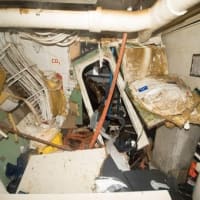






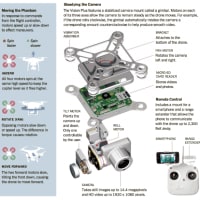
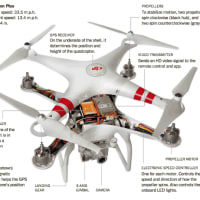

※コメント投稿者のブログIDはブログ作成者のみに通知されます